This article and this map are written by guest writer Roberta Osborn. Look for her soon to be published Science Fiction novel Chaos and Reunion. She has also written an excellent article on how to make a map for your created world. You can read that article and see the map she creates for us here: How to make a map for your novel
Using invented language in your novel
By Roberta Osborn
I learned a few things about using invented language while writing my first science fiction novel, Chaos and Reunion . What follows is the distillation of my experience.
For yourself:
- Keep a list of invented words. It is easy to forget how you spelled something you made up.
- Maintain the list in alphabetical order. Your list of invented words could become a glossary.
- Divide the list into sections as appropriate. My sections were: "glossary," "names," "places," and "geophysical features." Your sections could be "clans," "incantations," and "totems," or "military echelons," "warships," and "insignia"-whatever you invest your creative energy in. (Your categorization is also a creative act.)
- Keep the glossary formatting simple and standardized. You will be working in your glossary the whole time you are writing the book. The harder the format, the more frequently you will be introducing mistakes, which you should avoid. Although publishers will edit your work, 1) you will want to put your best foot forward when submitting it, and 2) you may choose to self-publish, which will require you to correct your own mistakes eventually anyway.
- When you add a name or word to the list, add it to your spell-check dictionary as well or even create a custom dictionary. Your word processor will enforce your spelling as you write.
- If you invent a concept but don't end up using it in the text, put it in the glossary anyway. These will be delicious little treasures for die-hard readers, and potential spring-boards for prequels and sequels.
For your stylist or publisher:
It is conventional to italicize foreign words in text, and invented words are foreign words. Some writing guides say to underline the words in your manuscript if they are to be italicized in the published work, because editors and printers have a harder time seeing the italics. This may well be archaic advice, but I followed it, and it was one of the few things in my electronic manuscript that created problems for my book stylist. (Preparing to self-publish is something you can do to keep yourself busy while waiting to hear back from a publisher.)
- Find out early if and how your word processing software supports the global replacement of one text formatting scheme with another (e.g., converting underlines to italics, or italics to a new font). For example, Microsoft Word's italic fonts are not true fonts in and of themselves-they can be converted back and forth by clicking a button because the font is generalized. Publishers may want to use fonts that are specifically italic, bold, etc.. You will want to be able to format your manuscript variously for various publishers.
- Maintain a manuscript that permits italicized words to be electronically distinguished from plain text. When my book stylist was attempting to set the invented words in italic type using real layout software on a Mac, the Microsoft Word fonts were not electronically distinguishable to him. He solved the problem before I could convert the file for him, but it took some work. It would have been easier for him to replace one specific font with another. Here is what I recommend if you are using Word:
Option 1. Use Styles to mark your invented words consistently in some distinguishing way. Keep the Styles window open while you write. You can edit the style at any time to automatically change the font or character format of your invented words across the entire work. Then you will be able to proactively modify and save your book in the format your stylist, printer, or publisher needs.
Option 2. Become expert with using Word's Find and Replace , Format features, so you can make invented word format changes as necessary before submitting your work.
- Export the file in software-agnostic format. Your manuscript must flow into another product, repaginate, and realign. Special formatting features like Word's Styles will be very useful to control how your invented words are formatted, but may not be accessible to other layout systems. Once you are done, save a version of your file in *.rtf format for general compatibility. This will save the text with the characteristics set by Styles , but without the Styles themselves. For some other helpful rules, see http://www.chicagomanualofstyle.org/home.html , "Electronic Manuscript Preparation Guidelines for Authors."
For your readers:
Invented language can provide a sense of other-worldliness, but it can be hard on the reader. Early readers of my novel expressed discomfort with the density of foreign words in the beginning of the book. Because these readers did not typically read science fiction, I was tempted to downplay their discomfort-but I resisted the temptation to ignore what readers were telling me (as should you). I used the strategies listed below to make it as easy as possible for my readers to "get it" the first time and every time. For your reader's sake, be attentive to this problem and use these or other solutions.
- Ignore the "multiple language" problem entirely. Move flexibly back and forth between invented words and the English-equivalent as necessary to make it easy for readers to remember meanings and follow the action. The assumption is, the person relaying the story is comfortable with both languages.
- Follow the invented word with it's English meaning as often as necessary , e.g., ". jiji , cookies."
- Make the sight or sound of the invented word resonate to its English equivalent. Here are some other examples from my book:
- cascor, similar to "cascade," to represent a cascading physiological symptom
- woldoff, similar to "wolf," to represent a predacious animal
- oris, similar to "orca," to represent a sea-dwelling creature
- Avoid making readers trip over, wonder about, invent, or interpret pronunciation too much.
- Encourage your readers to pronounce what they read any way they like. (That's my rule and I am sticking to it.)
- Spell the invented words to be simply and easily pronounced somehow if read as if they were English , unless you have a good reason to do otherwise. For example, I changed the name "Xajis Lai" to "Zajis Lai" to make the initial sound as obvious as possible , but I left "Xeppa," the other, with the "X" to resonate with "xeno-," stranger.
- Avoid using symbols, punctuation, or strings of consonants to make the words look or sound foreign , unless translation, click languages, or Klingons are significant parts of your story.
- To create a distinguishing look, use a simple, easy-to-read rule. For example, I used double a's in the first syllable of some names, as in "Aarumedi" and "Daawer" for one language, and double l's, as in "Llallato," in another.
- Use the English-equivalent as often as you like once the reader understands the significance of your special concept. In my novel, the concept of a shanil , a special biological category of female, could eventually be referred to simply as "widow," because that English word reminded the reader of the significance of the new concept.
- Reinforce nicknames. As odd as it seems, one of my readers did not instantly read "Aaru" as the nickname for "Aarumedi."
- Give a few of your invented words a little nuance and history. Interesting revelations can be developed around the fact that words, even invented ones, sometimes have more than one meaning, or derive from historic or mythological references. This can give you surprises and more story to tell. Several of my most cherished story moments revolve around such revelations.
This article is Copyright© 2010 Roberta Osborn, All Rights Reserved
Resources for Writers
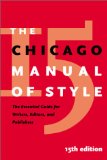 
The Chicago Manual of Style
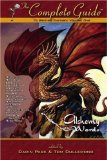  Alchemy with Words: The Complete Guide to Writing Fantasy vol 1 (The Compete Guide Series) (Volume 1) Alchemy with Words: The Complete Guide to Writing Fantasy vol 1 (The Compete Guide Series) (Volume 1)
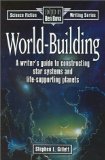 
World Building (Science Fiction Writing) This book is designed to give science fiction writers the solid grounding they need in real science to make their fictions read like fact. World Building is a blueprint in words, calculations, tables and diagrams to help writers transport readers from one world to another. This book is designed to give science fiction writers the solid grounding they need in real science to make their fictions read like fact. World Building is a blueprint in words, calculations, tables and diagrams to help writers transport readers from one world to another.
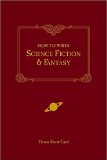  How to Write Science Fiction & Fantasy How to Write Science Fiction & Fantasy Orson Scott Card's Hugo award-winning classic on the art and craft of writing science fiction and fantasy is available in paperback! Card provides invaluable advice for every science fiction and fantasy writer interested in constructing stories about people, worlds and events that stretch the boundaries of the possible...and the magical. They'll learn: * what is and isn't science fiction and fantasy, and where their story fits in the mix * how to build, populate, and dramatize a credible, inviting world readers will want to explore * how to use the MICE quotient--milieu, idea, character and event--to structure a successful story * where the markets are, how to reach them and get published There's no better source of information for writers working in these genres. This book will help them effectively produce exciting stories that are both fascinating and market-ready. Orson Scott Card's Hugo award-winning classic on the art and craft of writing science fiction and fantasy is available in paperback! Card provides invaluable advice for every science fiction and fantasy writer interested in constructing stories about people, worlds and events that stretch the boundaries of the possible...and the magical. They'll learn: * what is and isn't science fiction and fantasy, and where their story fits in the mix * how to build, populate, and dramatize a credible, inviting world readers will want to explore * how to use the MICE quotient--milieu, idea, character and event--to structure a successful story * where the markets are, how to reach them and get published There's no better source of information for writers working in these genres. This book will help them effectively produce exciting stories that are both fascinating and market-ready.
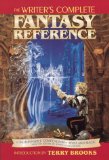  The Writer?s Complete Fantasy Reference The Writer?s Complete Fantasy Reference
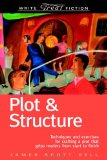  Plot & Structure: (Techniques And Exercises For Crafting A Plot That Grips Readers From Start To Finish) (Write Great Fiction) Plot & Structure: (Techniques And Exercises For Crafting A Plot That Grips Readers From Start To Finish) (Write Great Fiction)
|
![]()



![]()

